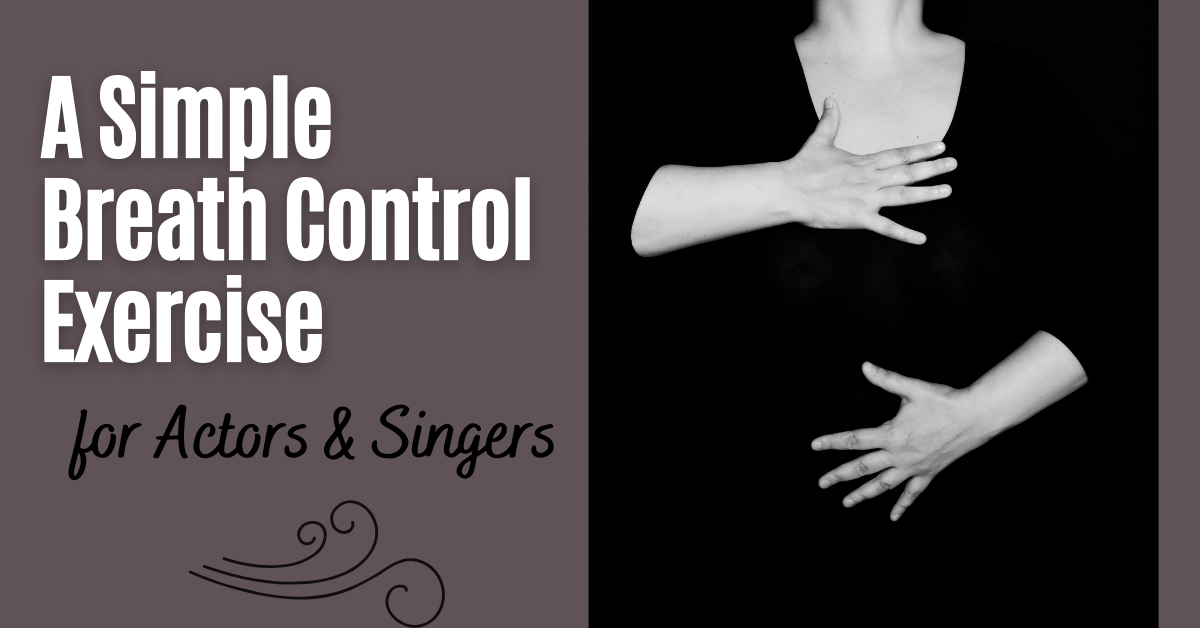Agatha Rex by Lindsay Price is a bold high school take on Antigone - packed with heart, conflict, and a powerhouse ensemble. One girl. One stand. One huge risk. *NEW COMPETITION VERSION AVAILABLE!*
A Simple Breath Control Exercise for Actors & Singers
Breath control is so important for performers, whether they’re in rehearsal, onstage, or somewhere in between. Breath control affects the range, volume, and speed of both speaking and singing. Practicing skills to improve breath control technique can vastly improve your speaking and singing abilities.
Breath control exercises can also help calm your nerves! Have you ever felt nervous before going up onstage? Your breathing may quicken and you may take more shallow breaths to get more oxygen to your brain. You may rush through your lines to try and get them out faster. Maybe you have to take more breaths to get through a vocal phrase.
Taking time to focus on breathing deeply and completely filling your lungs can help you to relax a bit and feel more confident.
The following exercise will help you to train yourself to focus on your breathing and to improve your breath control. It’s deceptively simple, but working on it a few minutes every day really adds up.
Instructions:
1. Stand with your feet flat on the floor and keep your shoulders back and relaxed. Imagine a string coming out of the top of your head that keeps you standing straight and tall.
2. Place your hands on your stomach. Practice taking a breath from your diaphragm. Imagine your lungs and diaphragm filling up with air like a balloon. Feel your stomach expand and contract as you inhale and exhale. Make sure not to hunch up your shoulders around your ears or gasp. Keep your inhale controlled!
3. Breathe in for a count of four, and then exhale though your teeth with a “ssssss” sound for a count of four. When you come to four, stop the exhale crisply. You’ll probably have lots of air left, but the exercise is going to become more challenging!
4. Breathe in for a count of four, and repeat the exhale for a count of eight. Repeat the exercise exhaling for longer counts (ten, twelve, fourteen). The more you practice this exercise, the longer you will be able to hold the sound.
The reason for cutting the exhale off crisply is to practice ending on an exact count. This is useful for singers, as they frequently need to cut off a note at the exact same time as the rest of the group, for a clean sound.
Variations:
Change up the sound. “Ssssss” is easy to start with, but challenge yourself to use different sounds like “ah,” “yeah,” “no,” “mmm,” and “why.” You can also challenge your ensemble members to match pitch with each other, or to exhale in harmony!
Click below for a PDF Practice Log that you can download and use in your classroom. Have your students try this exercise daily from Monday to Friday. In the 4-count, 8-count, 10-count, 12-count columns, have them note with a check mark whether they were able to complete the exercise. Have them rate themselves with a mark from 1 to 5 on how successfully they feel they completed each vocal pass.
5 = completed with ease
4 = completed to the actor’s satisfaction
3 = completed, but not easily
2 = completed with difficulty
1 = incomplete
The Etc. Column is where the student can note if they were able to extend their practice to a higher count (14 and upwards). Sounds Used refers to the sound made (“sssss,” “ah,” “yeah,” “no,” “mmm,” “why”). Have them note any successes or challenges in the last two columns. On Friday, have your students complete the Check-In Reflection below the log.
Good luck and have fun!



